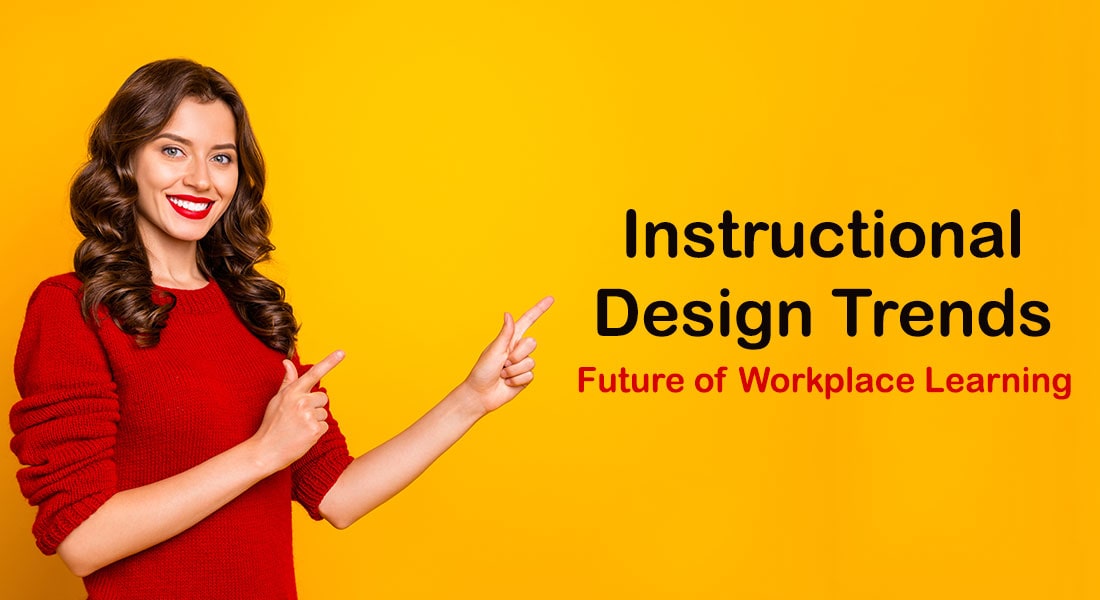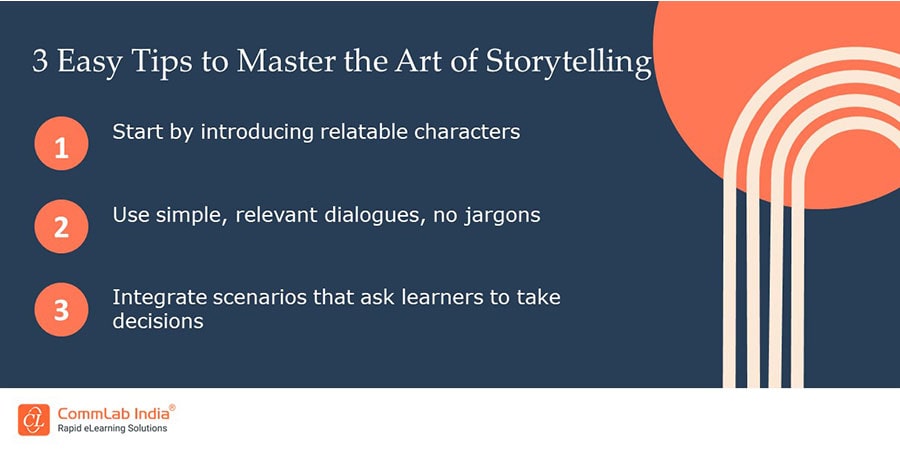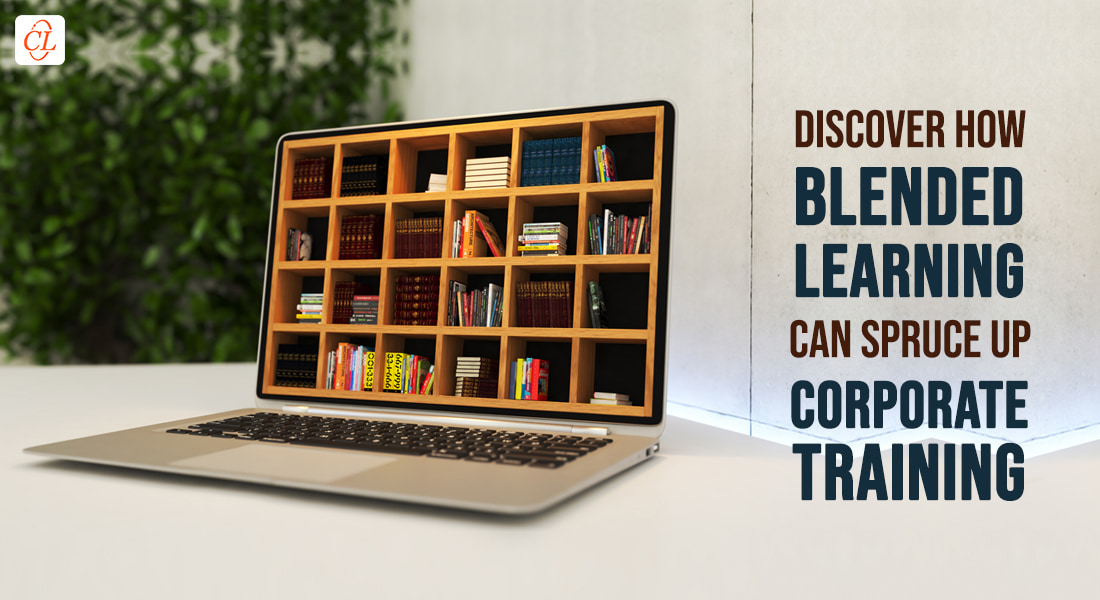6 Instructional Design Trends That Will Shape the Future of Workplace Learning
Instructional design is the bedrock of learner-centric eLearning. This blog entails the recent trends that will shape the future of workplace learning.

eLearning has emerged to be the go-to training format for successful organizations for quite some time now. Leading companies are reaping its manifold benefits and improving their business results. The connection between eLearning and instructional design is noteworthy. An awesome eLearning course stands on the bedrock of robust instructional design. With rapid advancements in the field of corporate L&D, instructional designers must keep abreast of the latest trends to design courses that garner attention, drive learner engagement, and achieve desired results. If you are keen to learn what’s trending in the current scenario and what’s going to shape the future of workplace learning in the coming days, keep scrolling.
Robust Instructional Design is the Foundation of a Learner-Centric eLearning Course
Here are a few latest trends that you shouldn’t miss out:
- Storytelling
- Collaborative and Social learning
- Microlearning
- Blended learning
- Gamification
- Personalized learning
- Immersive learning
Key Instructional Design Trends That Will Shape the Future of Workplace Learning
Storytelling
Storytelling is an awesome instructional design strategy that presents content in the form of interesting narratives that build an emotional connection with the learners. Storytelling allows you to present content in an impressive manner by using characters, scenarios, and a storyline. The approach aims at persuading the learner to imagine himself in that scenario and make decisions that help the character mitigate the challenge presented in the scenario.
It is important to choose characters and build scenarios that align with real-life work scenarios to help learners perform their daily job tasks with ease. You should craft the story structure in a way that aligns with clearly defined learning objectives and helps learners achieve the desired learning outcomes. The use of multimedia elements such as background music, images, gifs, sound effects, and other media enhances the overall appeal of the eLearning courses, garners learners’ attention, and boosts learning.

Collaborative and Social Learning
Gone are the days of passive PowerPoint presentations that were published online for learners in the name of eLearning. Modern learners are no longer restricted to passive eLearning courses. It is crucial for organizations to understand the changing preferences of modern learners and offer them learning in the format that is best suited for them.
Collaborative learning is one such way. Make sure your eLearning courses offer ample scope for learners to interact with the content. Virtual training programs like virtual instructor-led training (VILT) programs offer a great scope of collaboration and peer-to-peer learning. Features like chats, polls, and breakout rooms provide a platform for the learners to exchange ideas and opinions and learn from each other.
Social media is another powerful platform that could be leveraged to impart training. Social learning platforms such as online forums, communities, and social learning apps are modern ways to allow learners to learn from each other.
→ Download eBook: The State of Learning: 2023 and Beyond
Microlearning
Microlearning is the latest buzz in the corporate L&D arena and is extremely popular among modern learners. Bite-sized microlearning modules are an effective way to train the modern workforce, irrespective of age, gender, and designation. Microlearning allows you the flexibility to choose from multiple learning formats. You can design microlearning assets in the form of videos, infographics, interactive PDFs, eBooks, podcasts, digital flashcards, and more to craft a perfect learning journey for your learners.
These micro power-packed learning nuggets are focused on delivering a single learning objective and are comprehensive. These short modules are easy to consume and ensure retention of knowledge as they do not overwhelm learners with cognitive overload. They are extremely handy in the moment of need and make learning a part of the workflow. Learners can access microlearning lessons at their convenience and on their devices of choice.

Gamification
The modern workforce is mostly a mix of millennials and Gen Zs. These digital natives are charmed by new-age learning formats. Gamification is a new-age instructional strategy that can enliven your eLearning courses. Integrating gaming elements such as scores, levels, badges, and leaderboards not only adds fun to learning but also motivates learners and instills healthy competition among them.
Gamification of eLearning courses boosts learner engagement and leads to better retention of the learned concept. AR/VR-based games transport learners to a virtual world where they can experience real-life work scenarios. You can include these games in the eLearning courses to offer immersive learning experiences and make dry subjects interesting.
Blended Learning
Blended learning, as the name suggests, offers a blend of classroom as well as online learning experiences to learners. In today’s scenario where global organizations are offering hybrid or remote work facilities to their employees, the blended learning format is extremely useful to deliver training. It is an umbrella that entails multiple learning formats such as Instructor-led training or ILT or classroom training, and digital learning formats such as eLearning, VILT, and microlearning.
Blended learning or hybrid learning allows you the flexibility to train your learners using multiple learning formats that curb monotony and make learning an enjoyable journey. You can mix and match these formats to design personalized learning pathways for your learners and align learner and business needs for effective training. Each learning format under the blended learning umbrella is complementary to each other and if used judiciously can enhance the impact of your training initiatives, negate the forgetting curve, boost knowledge retention, and enhance employee performance and productivity.
Watch this video to learn about the three key components of blended learning.
Personalized Learning
In recent times, corporate L&D has become a strategic unit of leading companies and is playing a pivotal role in the overall success of businesses. With the advent of new technology like artificial intelligence (AI) and machine learning (ML), L&D has gradually evolved into an approach that leverages the power of technology to offer personalized learning to learners. It is way beyond the one-size-fits-all approach where training was meant to inform employees of the new offerings or processes.
AI-enabled learning management systems (LMS) can process humongous data and statistics to gauge learner performance and their learning preferences to generate reports that can help you craft personalized learning pathways that cater to the unique learning needs, styles, and preferences of modern learners.
Immersive Learning
The impact of technological advancements is on every sector and corporate L&D is not an exception. Leading companies are focused on offering immersive learning experiences to learners by leveraging the power of authoring tools. AI-based eLearning authoring tools can create courses that offer immersive learning experiences to learners, boost employee performance, and enhance training ROI.
AI-based eLearning authoring tools such as Vyond Go and Synthesia can design captivating videos that garner learners’ attention and immerse them in learning. Synthesia can help you create videos using AI avatars that offer rich learning experiences to learners.
AR and VR-based simulations are also a wonderful way to offer learners hands-on experience to perform high-risk job tasks like complicated surgeries, or flying an aircraft that involves critical thinking and decision-making abilities.
Parting Thoughts
Robust instructional design is the foundation of an engaging and learner-centric eLearning course. It is crucial to master the art of instructional design to develop eLearning courses that enhance learning and boost learner performance and productivity. It is also essential for organizations to keep abreast of the latest instructional design trends and incorporate them in designing online learning courses to build a future-proof workforce that’s equipped to take up unprecedented work challenges and help businesses thrive.
Corporate L&D is undoubtedly undergoing a revolution and it is vital to understand the aspects that are going to shape the future of workplace learning. Download this eBook to get holistic insights on the state of learning in 2023 and beyond.





